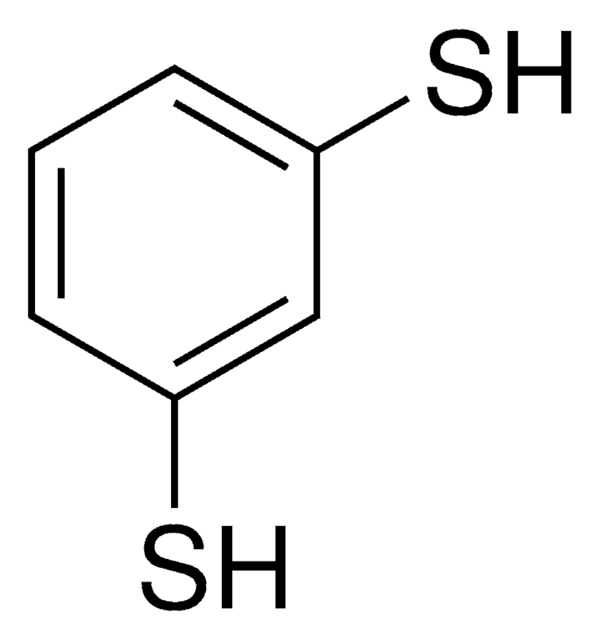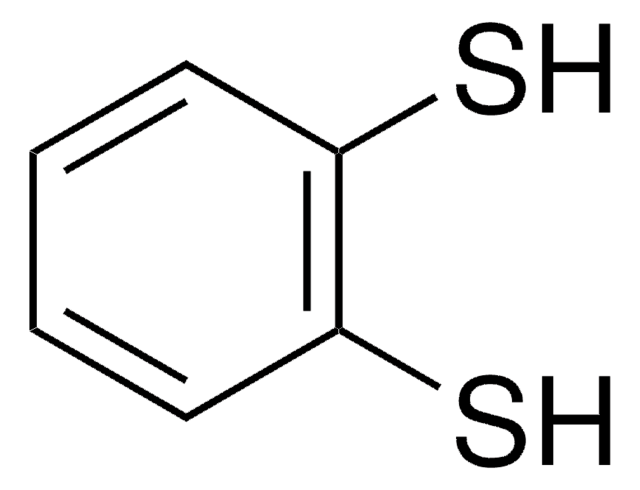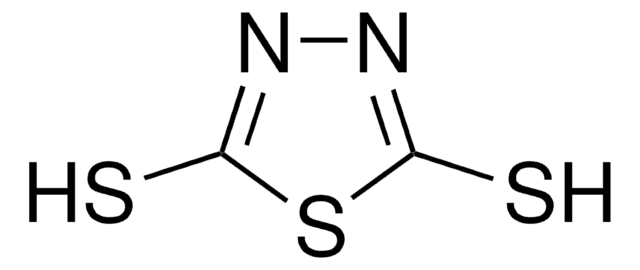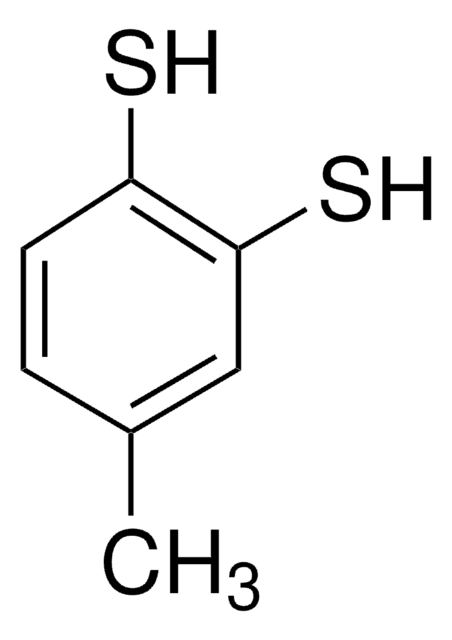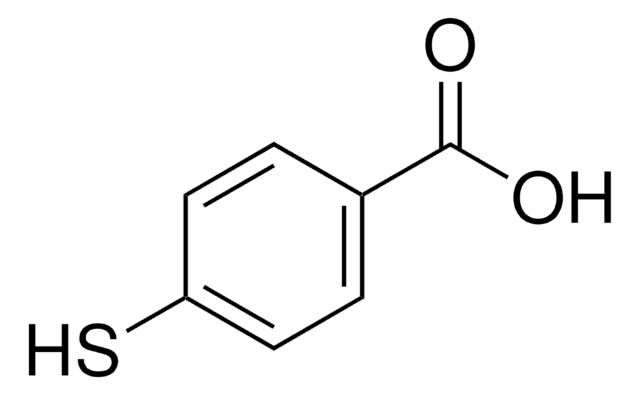Alle Fotos(2)
Wichtige Dokumente
763969
Benzene-1,4-dithiol
99% (GC)
Synonym(e):
1,4-Benzenedithiol, 1,4-Dimercaptobenzene
Anmeldenzur Ansicht organisationsspezifischer und vertraglich vereinbarter Preise
Alle Fotos(2)
About This Item
Empirische Formel (Hill-System):
C6H6S2
CAS-Nummer:
Molekulargewicht:
142.24
MDL-Nummer:
UNSPSC-Code:
12352103
PubChem Substanz-ID:
NACRES:
NA.23
Empfohlene Produkte
Qualitätsniveau
Assay
99% (GC)
Form
powder or crystals
mp (Schmelzpunkt)
92-97 °C
Lagertemp.
2-8°C
SMILES String
Sc1ccc(S)cc1
InChI
1S/C6H6S2/c7-5-1-2-6(8)4-3-5/h1-4,7-8H
InChIKey
WYLQRHZSKIDFEP-UHFFFAOYSA-N
Allgemeine Beschreibung
Benzene-1,4-dithiol (BDT) is a class of aromatic dithiol that can be used to form a self-assembled monolayer (SAM) on a variety of surfaces.
Anwendung
BDT can be used as a cross-linker that facilitates the development of acrylate based light sensitive epoxidized soya bean oil for 3D printing applications. Gold based nanoconstrictions can be fabricated by functionalizing the surface with BDT, which reduces the overall flicker noise with respect to the unmodified surface.
This molecule can be used in single molecule junctions in electronic devices. It has also shown use in nanomaterial synthesis.
Lagerklassenschlüssel
11 - Combustible Solids
WGK
WGK 3
Flammpunkt (°F)
Not applicable
Flammpunkt (°C)
Not applicable
Hier finden Sie alle aktuellen Versionen:
Besitzen Sie dieses Produkt bereits?
In der Dokumentenbibliothek finden Sie die Dokumentation zu den Produkten, die Sie kürzlich erworben haben.
Kunden haben sich ebenfalls angesehen
Xing; et al.
Journal of the American Chemical Society, 132, 7946-7946 (2011)
Li Lin et al.
ACS nano, 12(7), 6492-6503 (2018-06-21)
Charge transport plays an important role in defining both far-field and near-field optical response of a plasmonic nanostructure with an ultrasmall built-in nanogap. As the gap size of a gold core-shell nanomatryoshka approaches the sub-nanometer length scale, charge transport may
Photoresins based on acrylated epoxidized soybean oil and benzenedithiols for optical 3D printing
Miezinyte G, et al.
Rapid Prototyping Journal (2018)
Conductance of a molecular junction
Reed MA, et al.
Science, 278(5336), 252-254 (1997)
Yung-Ching Chang et al.
Optics express, 25(20), 24767-24779 (2017-10-19)
Near-field and far-field optical properties of plasmonic materials can be tailored by coupling the existing structures. However, fabricating 3D coupled structures in the solution by molecular linkers may suffer from low yield, low stability (particle aggregates), long reaction time, complex
Unser Team von Wissenschaftlern verfügt über Erfahrung in allen Forschungsbereichen einschließlich Life Science, Materialwissenschaften, chemischer Synthese, Chromatographie, Analytik und vielen mehr..
Setzen Sie sich mit dem technischen Dienst in Verbindung.



